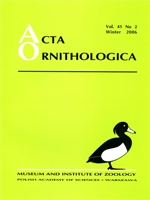We present the frequency and duration of prolonged incubation in the Bearded Vulture and test different hypotheses on the possible adaptive significance of this behaviour. The mean and median prolonged incubation lasted 29 and 25 days respectively (n = 10), i.e., 54% and 46% respectively longer than the average incubation period. There was a negative correlation between the duration of prolonged incubation and the egg-laying date: prolonged incubation lasted longer in earlier clutches than in later ones, and territories with many breeding attempts showed short incubation prolongations. On the other hand, no correlation was found between the duration of prolonged incubation and productivity or breeding success. The results suggest that more experienced birds, which occupy higher quality territories and lay their eggs earlier, prolonged their incubation to a greater extent. Although prolonged incubation may constitute an example of adaptive behaviour, the extensive periods documented in some cases do not appear to support this assumption.
How to translate text using browser tools
1 December 2006
Prolonged Incubation of Non-Viable Eggs in the Bearded Vulture Gypaetus barbatus
Antoni Margalida,
Joan Bertran
B. E. Arroyo
,
M. Razin
2006. Effect of human activities on bearded vulture behaviour and breeding success in the French Pyrenees. Biol. Conserv. 128: 276–284. Google Scholar
J. Bertran
,
A. Margalida
2002. Social organization of a trio of Bearded Vulture (Gypaetus barbatus): Sexual and parental roles. J. Raptor Res. 36: 65–69. Google Scholar
P. D. Boersma
,
N. T. Wheelwright
1979. Egg neglect in the Procellariiformes: reproductive adaptations in the Forktailed Storm-petrel. Condor 81: 157–165. Google Scholar
C. J. Brown
1990. Breeding biology of the Bearded Vulture in southern Africa. Vol. I. The pre-laying and incubation periods. Ostrich 61: 24–32. Google Scholar
R. B. Brua
,
G. L. Nuechterlein
,
D. Buitron
1996. Vocal response of eared grebe embryos to egg cooling and egg turning. Auk 113: 525–533. Google Scholar
J. D. Buntin
1996. Neural and hormonal control of parental behavior in birds. Adv. Study Behav. 25: 161–213. Google Scholar
T. Chaurand
,
H. Weimerskirch
1994. Incubation routine, body mass regulation and egg neglect in the Blue Petrel Halobaena caerulae. Ibis 136: 285–290. Google Scholar
N. E Collias,
E. C. Collias
1984. Nest building and bird behaviour. Princeton Univ. Press. Google Scholar
R. H. Drent
,
J. M. Tinbergen
,
H. Biebach
1985. Incubation in the starling Sturnus vulgaris: resolution of the conflict between egg care and foraging. Netherl. J. Zool. 35: 103–123. Google Scholar
R. S. Ferguson
,
S. G. Sealy
1983. Breeding ecology of the Horned Grebe, Podiceps auritus, in southwestern Manitoba. Can. Field Nat. 97: 401–408. Google Scholar
P. Forslund
,
T. Pärt
1995. Age and reproduction in birds: hypotheses and tests. Trends Ecol. Evol. 10: 374–378. Google Scholar
B. J. Hatchwell
,
M. K. Fowlie
,
D. J. Ross
,
A. F. Russell
1999. Incubation behaviour of Long-tailed Tits: why do males provision incubating females? Condor 101: 681–686. Google Scholar
F. Hiraldo
,
M. Delibes
,
J. Calderón
1979. El Quebrantahuesos Gypaetus barbatus L. Monografía 22. Instituto para la Conservación de la Naturaleza, Madrid. Google Scholar
L. C. Holcomb
1970. Prolonged incubation behaviour of Red-winged Blackbird incubating several egg sizes. Behaviour 36: 74–83. Google Scholar
N. Huin
1997. Prolonged incubation in the Black-browed Albatross Diomedea melanophris at South Georgia. Ibis 139: 178–180. Google Scholar
J. Kloskowski
1999. Prolonged incubation of unhatchable eggs in Red-necked Grebes (Podiceps grisegena). J. Ornithol. 140: 101–104. Google Scholar
A. Margalida
,
B. E. Arroyo
,
G. R. Bortolotti
,
J. Bertran
2006a. Prolonged incubation in raptors: adaptive or nonadaptive behavior? J. Raptor Res. 40: 159–163. Google Scholar
A. Margalida
,
J. Bertran
2000. Breeding behaviour of the Bearded Vulture Gypaetus barbatus: minimal sexual differences in parental activities. Ibis 142: 225–234. Google Scholar
A. Margalida
,
J. Bertran
2002. First replacement clutch by a polyandrous trio of Bearded Vulture (Gypaetus barbatus) in the Spanish Pyrenees. J. Raptor Res. 36: 154–155. Google Scholar
A. Margalida
,
J. Bertran
,
J. Boudet
,
R. Heredia
2004. Hatching asynchrony, sibling aggression and cannibalism in the Bearded Vulture Gypaetus barbatus. Ibis 146: 386–393. Google Scholar
A. Margalida
,
S. Ecolan
,
J. Boudet
,
J. Bertran
,
J. M. Martinez
,
R. Heredia
2006b. A solar-powered transmitting video camera for monitoring cliff-nesting raptors. J. Field Ornithol. 77: 7–12. Google Scholar
A. Margalida
,
D. García
,
J. Bertran
,
R. Heredia
2003. Breeding biology and success of the Bearded Vulture Gypaetus barbatus in the eastern Pyrenees. Ibis 145: 244–252. Google Scholar
J. S. Marks
1983. Prolonged incubation by a Long-eared Owl. J. Field Ornithol. 54: 199–200. Google Scholar
J. A. Nilsson
,
H. G. Smith
1988. Incubation feeding as a male tactic for early hatching. Anim. Behav. 36: 641–647. Google Scholar
G. L. Nuechterlein
,
D. Buitron
2002. Nocturnal egg neglect and prolonged incubation in the Red-necked Grebe. Waterbirds 25: 485–491. Google Scholar
C. Rauter
,
H.-U. Reyer
1997. Incubation pattern and foraging effort in female Water Pipit Anthus spinoletta. Ibis 139: 441–446. Google Scholar
J. M. Reid
,
P. Monaghan
,
R. G. Nager
2002. Incubation and the costs of reproduction. In:
D. C. Deeming
(ed.).
Avian incubation. Behaviour, environment, and evolution. Oxford Univ. Press, pp. 314–325. Google Scholar

Acta Ornithologica
Vol. 41 • No. 2
December 2006
Vol. 41 • No. 2
December 2006
Bearded Vulture
birds of prey
energy constraints
Gypaetus barbatus
prolonged incubation
unhatchable eggs




